
Visiting Trail of Tears National Historic Trail
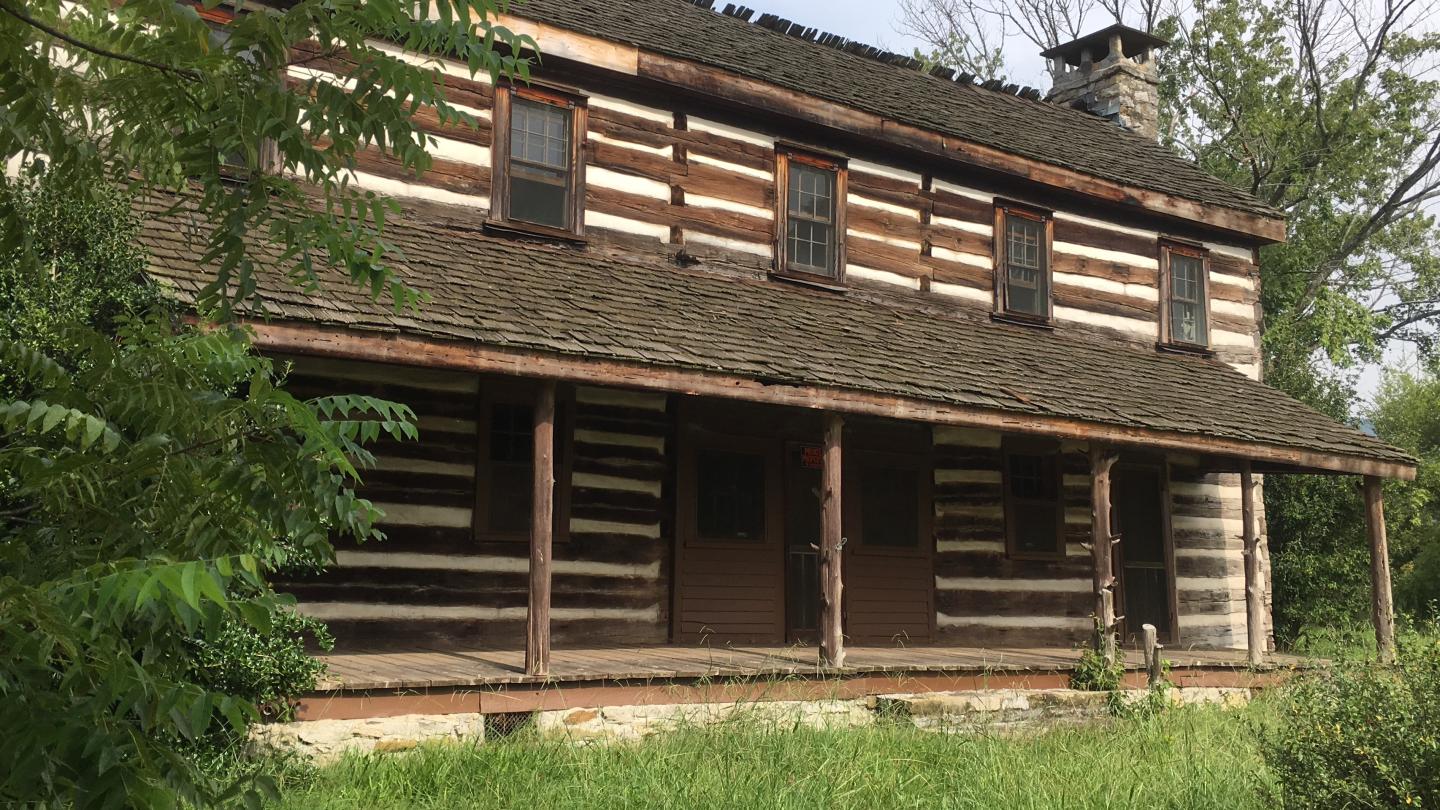
Reflect on a significant and somber chapter in US history, when the Cherokee were exiled from their ancestral lands along with the Chickasaw, Choctaw, Muscogee, and Seminole. Compelled to march hundreds of miles west under treacherous conditions, thousands perished along the trail. Yet cultures and Nations still thrive today.
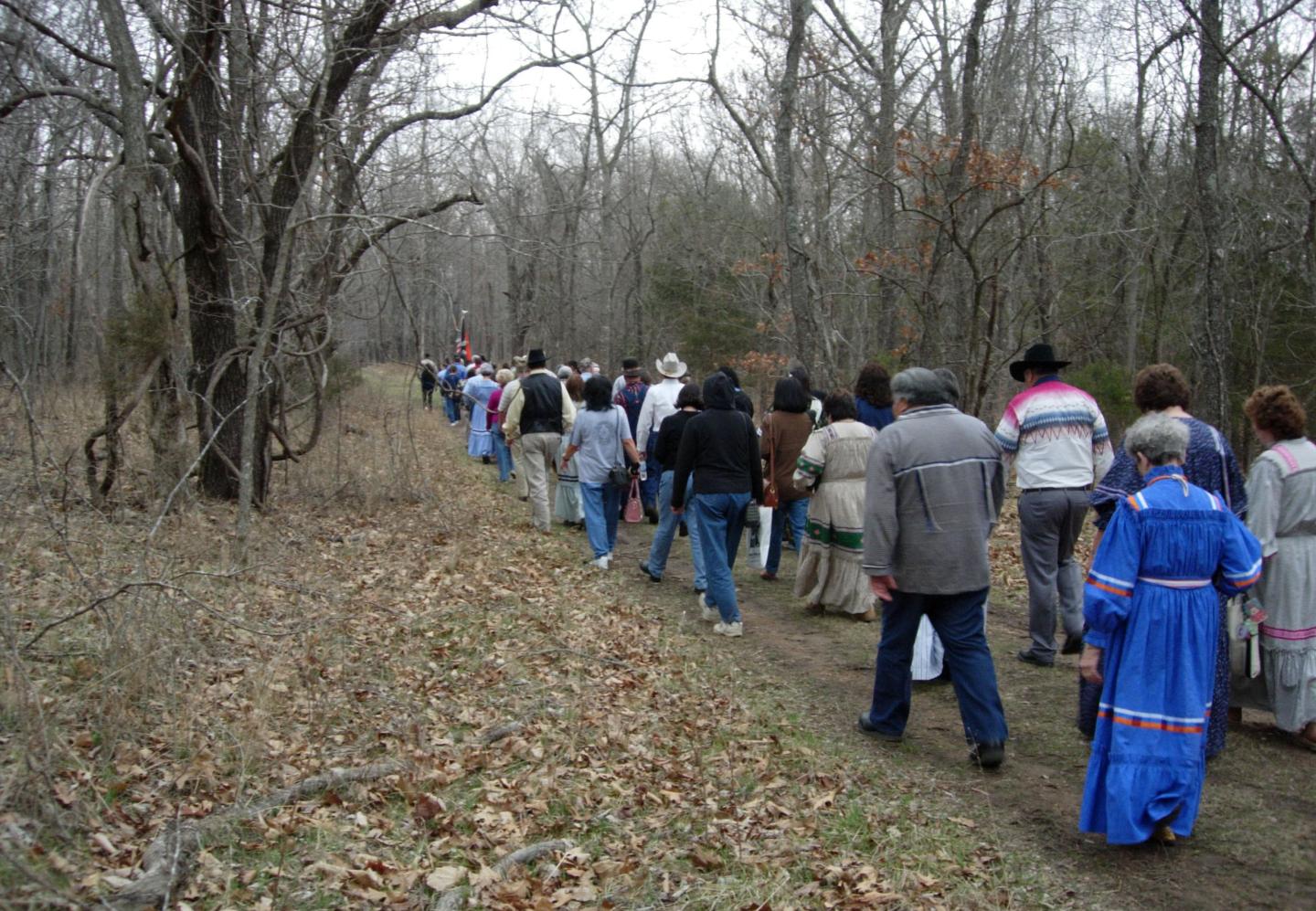
Trail of Tears National Historic Trail
With 5,043 miles of paths cutting through nine states, the Trail of Tears National Historic Trail invites us to reflect on a tragic past. During this time, 100,000 Indigenous people were uprooted from their ancestral lands to open them to white settlers. Forcibly relocated west to unfamiliar lands in present-day Oklahoma, at least 10 thousand lives were lost along the way.
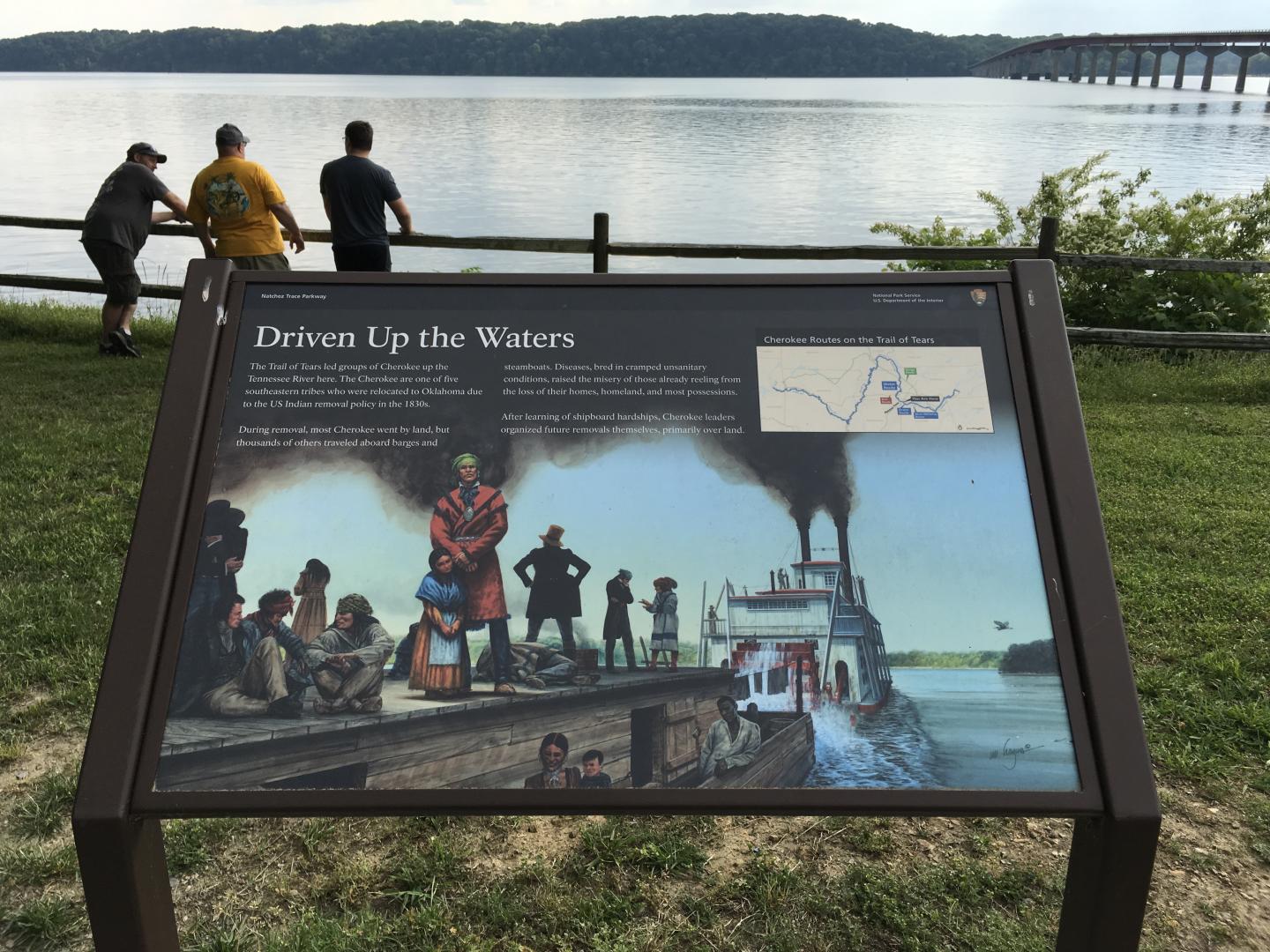
The treacherous journey west
Despite national division and Indigenous opposition, the Indian Removal Act was passed in 1830, authorizing the president to exchange Indigenous lands in existing states for land west of the Mississippi. Due to the natural and widespread Indigenous opposition to leaving their ancestral lands, Indian Removal was often conducted at gunpoint. Though promised resources and support for relocation, Indigenous tribes faced brutal marches of up to a thousand miles, often with inadequate food rations, shelter, or medical care. Groups were often made to leave their homes abruptly, leaving little time to pack possessions or provisions and causing families to be separated on the journey.

Resilience and enduring cultures
Nearly one in four Cherokee, the largest of the tribes removed, perished on the unspeakably difficult journey. And yet, the enduring culture of the Cherokee, Muscogee (Creek), Choctaw, Chickasaw, and Seminole Nations survived. The sites along the Trail of Tears stand as a testament to the resilience of Indigenous communities despite grave injustice and attempts of cultural erasure.
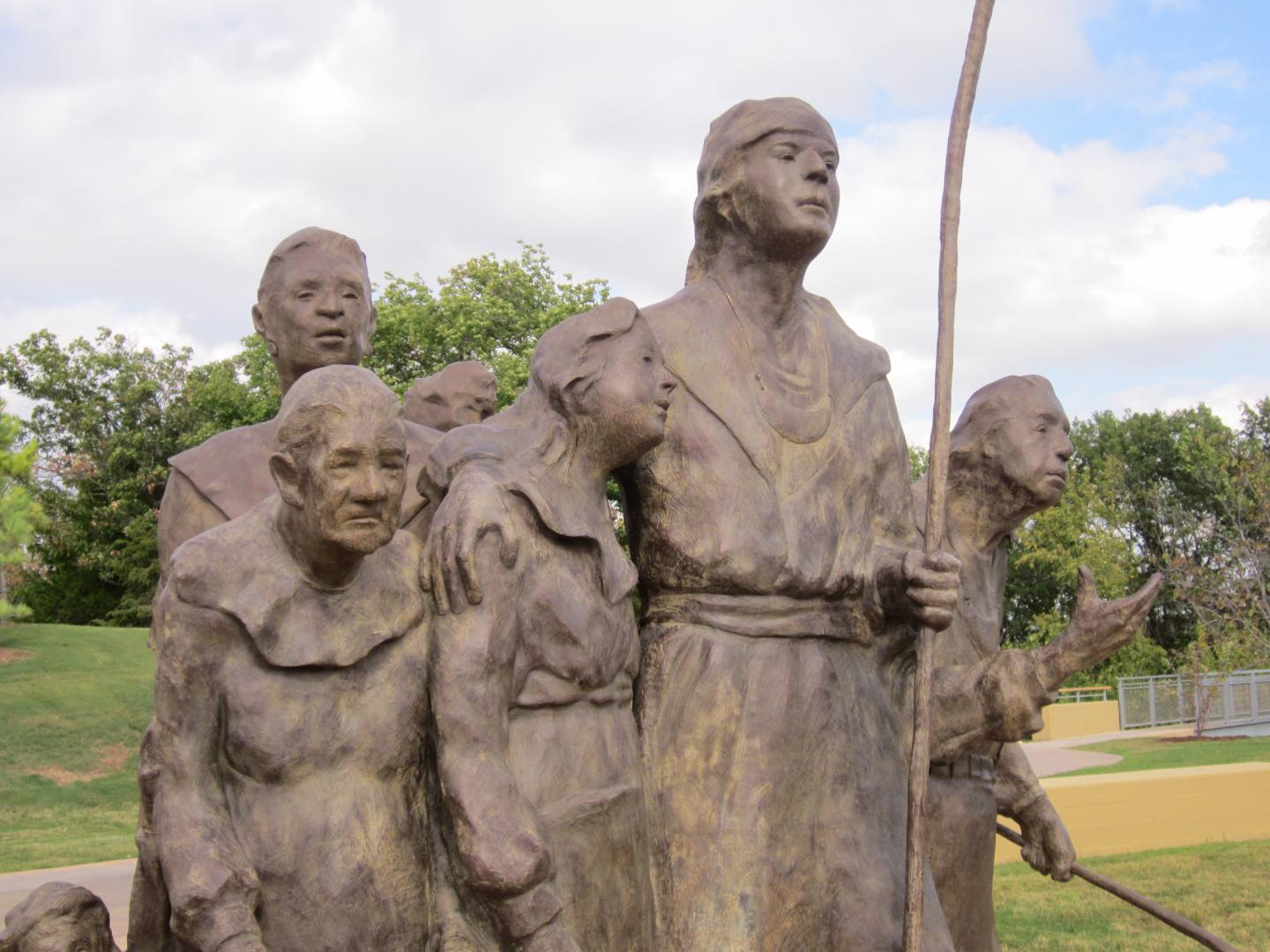
Why you should visit
Trail of Tears National Historic Trail is an illuminating site for those who want to contemplate the endurance and resilience of Indigenous peoples. Stretching across nine states, the trail memorializes the paths taken by tens of thousands of Indigenous peoples forcibly removed from their homelands. Visiting the trail honors their memory and helps amplify their stories of resilience when faced with injustice and unimaginable hardships.
Before you visit
There are a few ways you might wish to prepare for your visit to Trail of Tears National Historic Trail. Read about the history on the Trail of Tears National Historic Trail page on NPS.gov. Visit the website of the Cherokee Nation to get an introduction to the Cherokee people, whose ancestors survived removal. Be prepared to honor trails as places of remembrance by treating them with the care they deserve. Most importantly, come open to experience, learn, and reflect on the heavy history the trail sites carry.
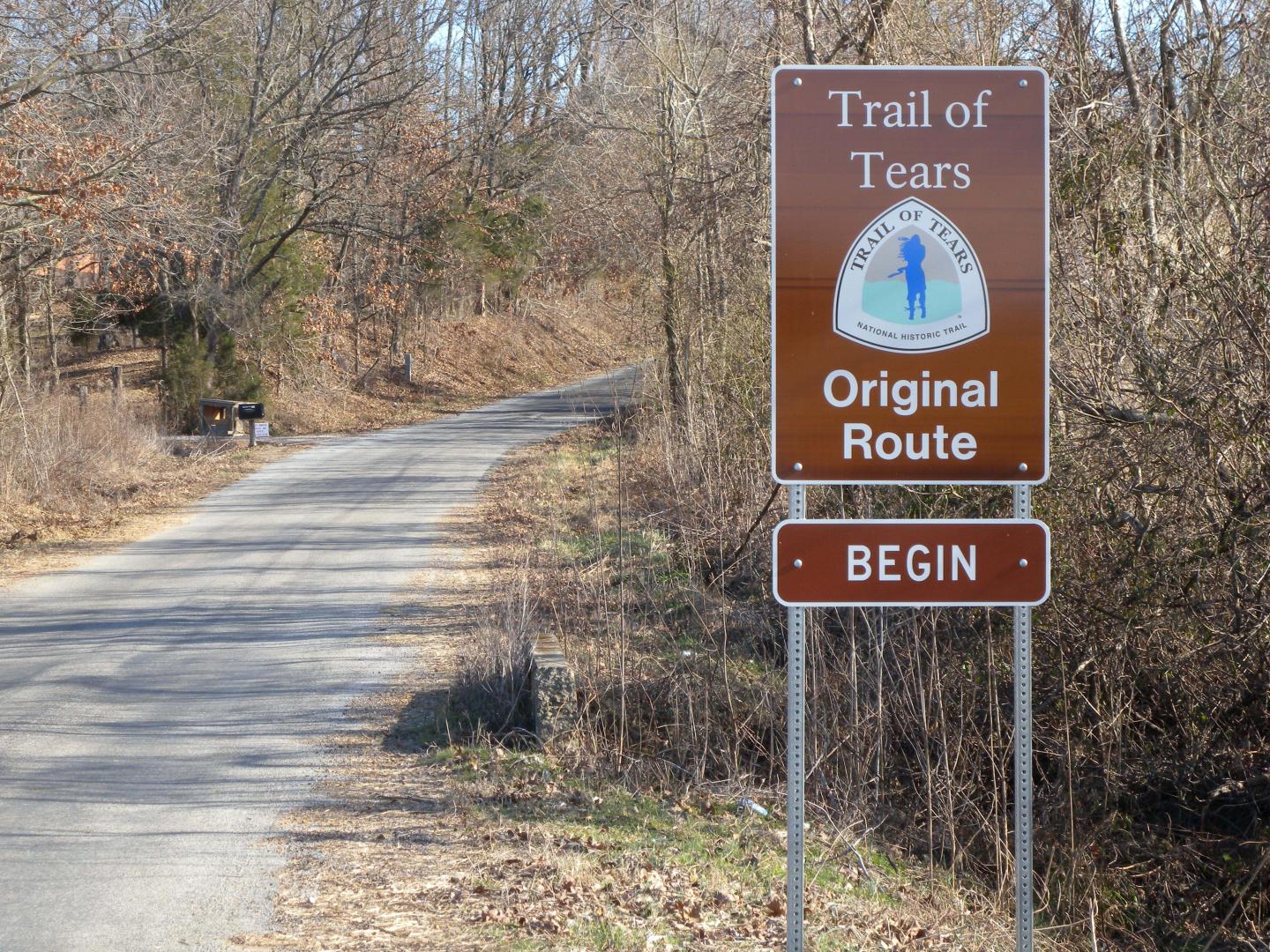
Plan a visit that works for you
Whether exploring an interpretive center for a few hours or retracing miles of the trail, visitors take on the important role of bearing witness to the strength and persistence of Indigenous communities while reflecting on the enduring impacts of the Trail of Tears. Choose an access point that's close or that interests you and spend time there. Or plan a longer trip with multiple stops for a deeper experience. Trail of Tears National Historic Trail has many points across nine states for delving into this important history, and each state helps tell the story.

Alabama: The city of Fort Payne
Gain insights into Cherokee life before removal at this former Cherokee settlement at the Willstown Mission Cemetery and the home of Andrew Ross, a Cherokee Supreme Court judge. At the beautiful Little River Canyon National Preserve, visitors can connect with this history more deeply.
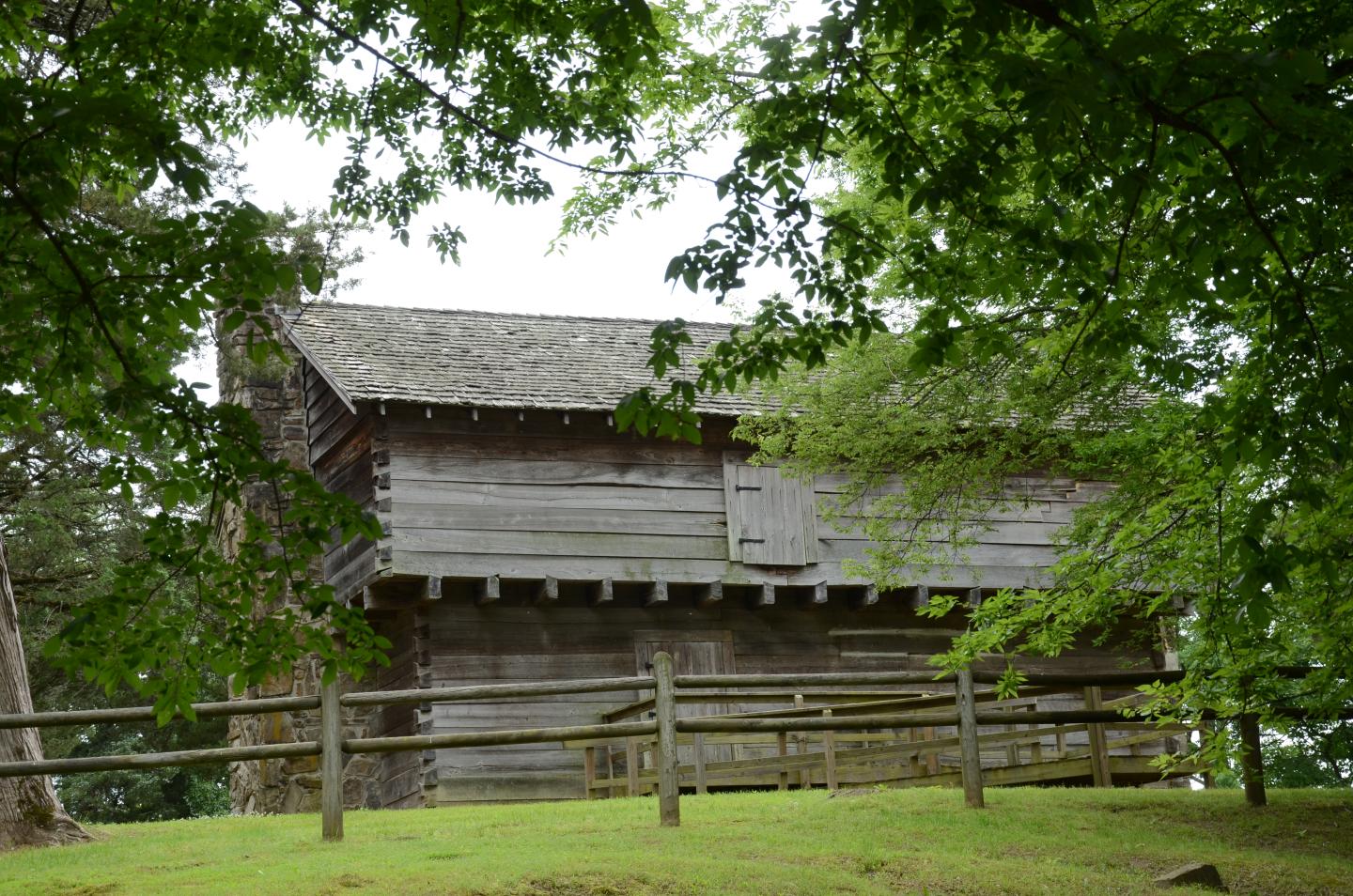
Arkansas: Water route sites near Little Rock
Experience exhibits on the Trail of Tears at the Historic Arkansas Museum in Little Rock, before learning more about when the blockhouse at Cadron Settlement Park was used as a resupply point along the trail. Remember the loss of the people who were laid to rest here before those remaining continued forward along the Arkansas River.

Georgia: New Echota and historic homes
Get a sense of Cherokee government and civil life in the early 1800s at New Echota State Park by touring the park’s many original and reconstructed buildings, including a print shop, council and courthouses, and barns.

Illinois: Encampments from an unforgiving winter
Visit the location of Cherokee winter camps at Camp Ground Church, Hamburg Hill, and McCorkle Creek, where the frigid, harsh winter of 1838 turned what should have been a nine-day section into a several month halt in dangerous conditions.
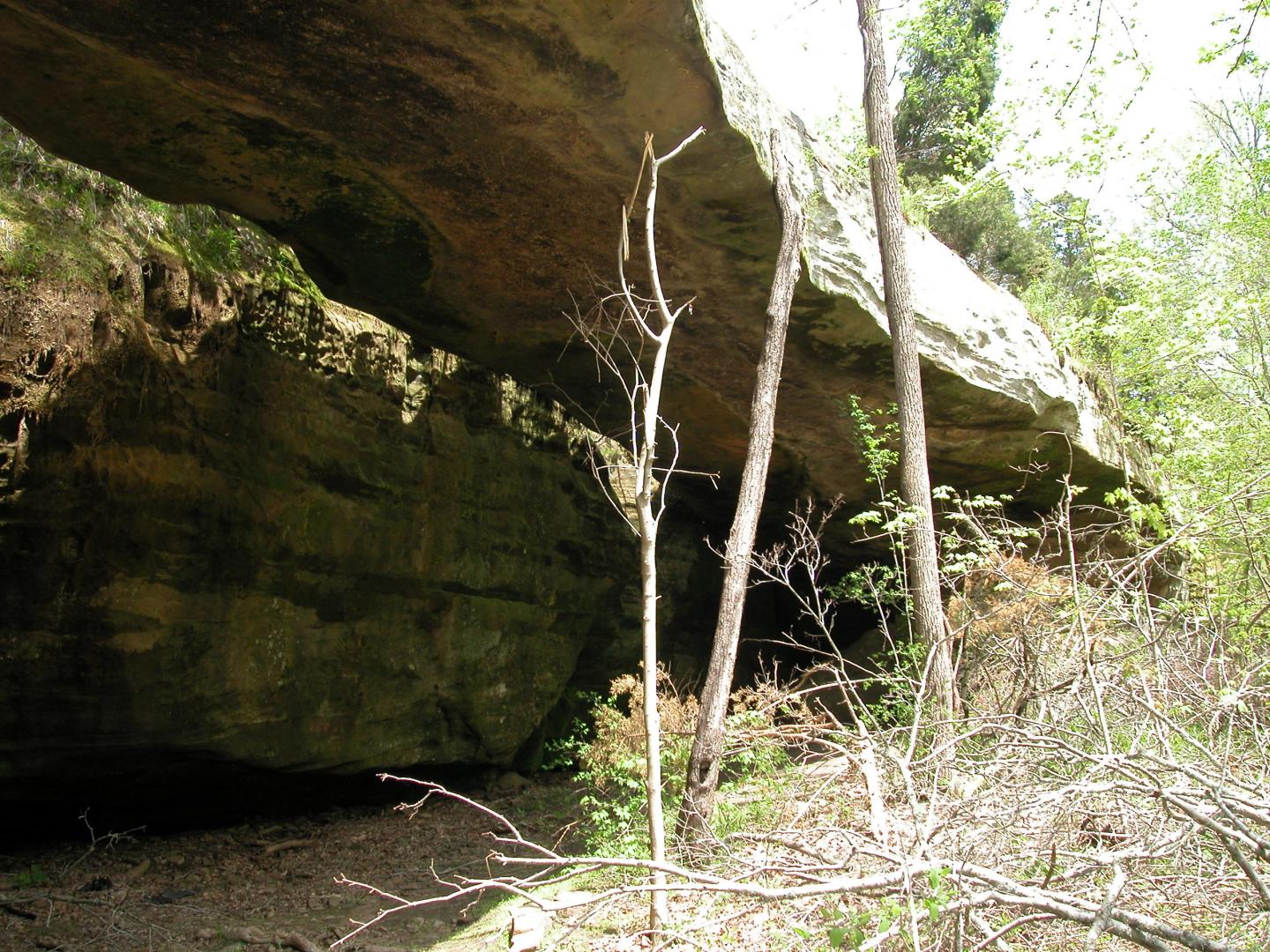
Kentucky: Midway through the Trail of Tears
Reflect on this history as you travel along the paths of Mantle Rock Nature Preserve and the Trail of Tears Commemoration Park, also home to a memorial and exhibits.
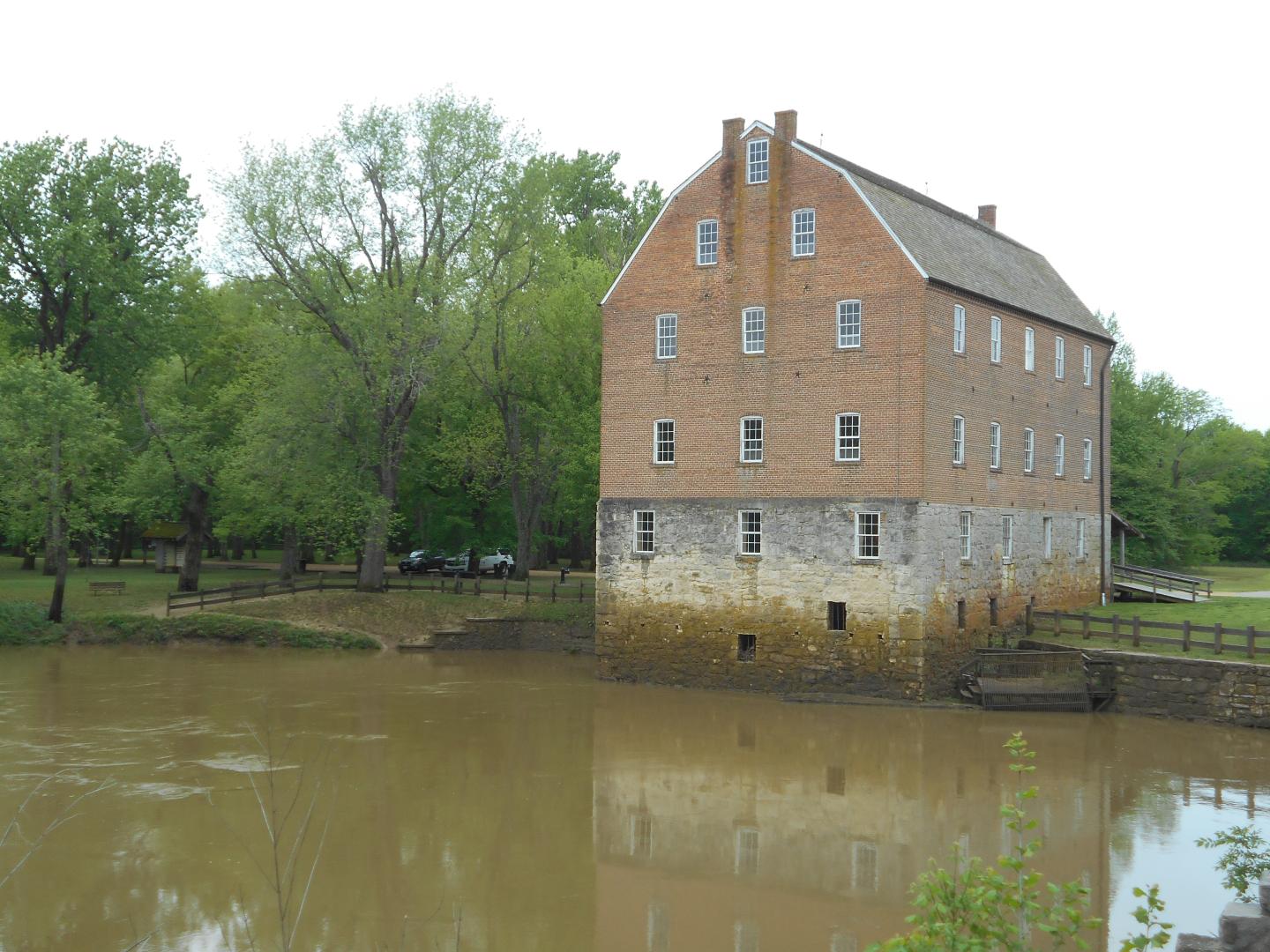
Missouri: A confluence of history on the Mississippi River
Contemplate the connection between Lewis and Clark’s trip west to explore the newly acquired Louisiana territory and Indian Removal three decades later where these historic journeys intersect along the Mississippi River at Trail of Tears State Park. From there, drive slightly west to learn about the process required to maintain provisions for such a long trek along the Trail of Tears at Bollinger Mill State Historic Site.

North Carolina: The Eastern Band of Cherokee
Immerse yourself in Cherokee history and culture at the Museum of the Cherokee Indian, on the sovereign lands of the Eastern Band of Cherokee. While in the town of Cherokee, stop by the Welcome Center for more information about other cultural attractions before walking the streets looking for statues of bears painted by Cherokee artists with cultural motifs and themes.
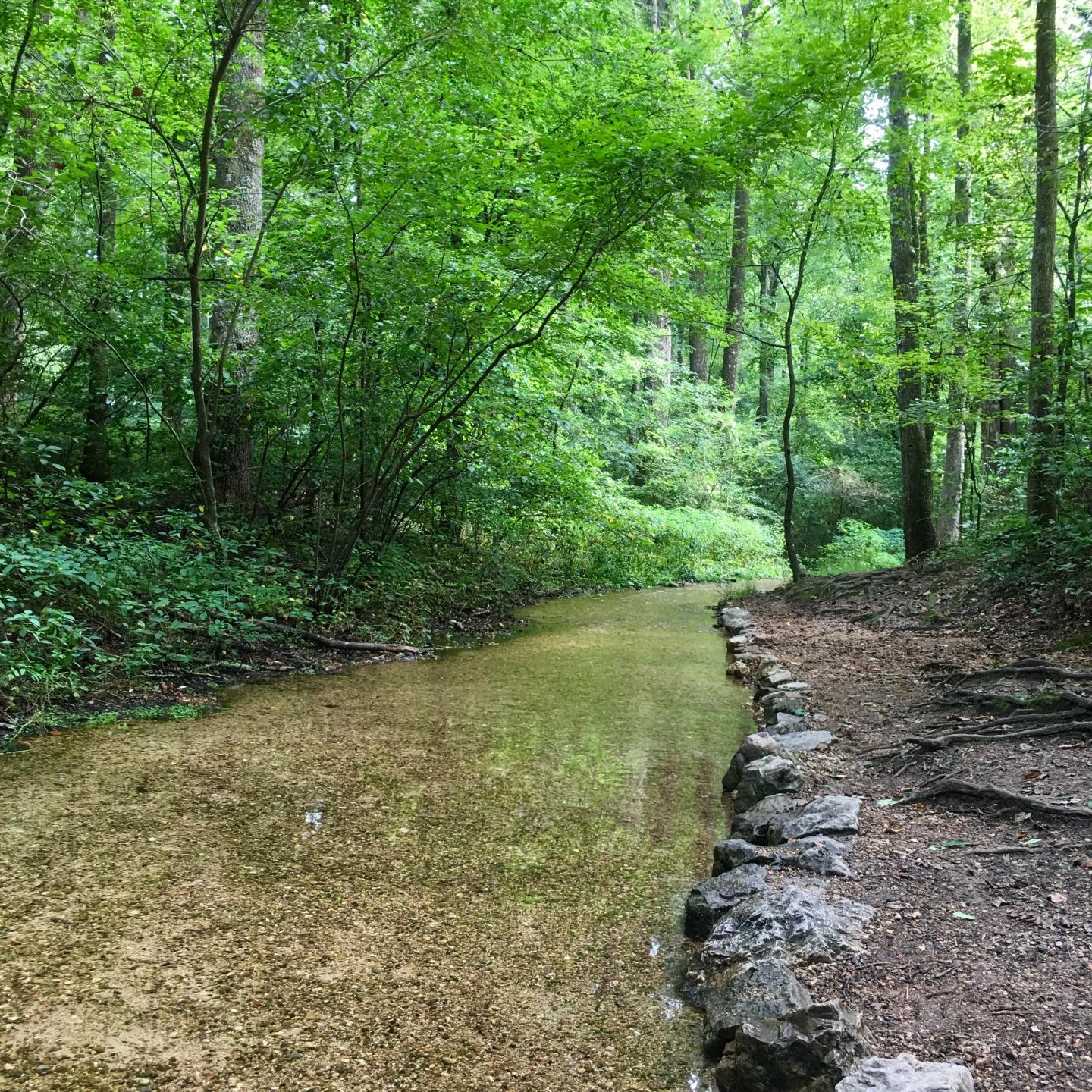
Tennessee: Cherokee homeland sites near Chattanooga
Explore ancestral Cherokee lands at Audubon Acres and Red Clay State Park to learn about the homelands they had to leave behind. In Chattanooga, visit the art installation at Ross’s Landing, the site of a Cherokee ferry across the Tennessee River later used as a deportation point of Cherokees during removal.

Oklahoma: A new home
Imagine the overwhelming emotions the Cherokee and other southeastern nations felt when they reached the end of the trail in present day Stilwell, Oklahoma. Stop at the Old Railroad Depot for an exhibit on the Cherokee’s arrival before visiting nearby disbandment sites and New Hope Cemetery, where a Cherokee plantation was previously located. Then witness the strength with which the Cherokee rebuilt their nation in their capital of Tahlequah, where you can visit The Cherokee Heritage Center Park entrance in Tahlequah, Oklahoma and the rebuilt Cherokee Female Seminary (now Northeastern State University’s Seminary Hall), the largest building erected by an Indigenous North American tribe at the time of its reopening in 1890.
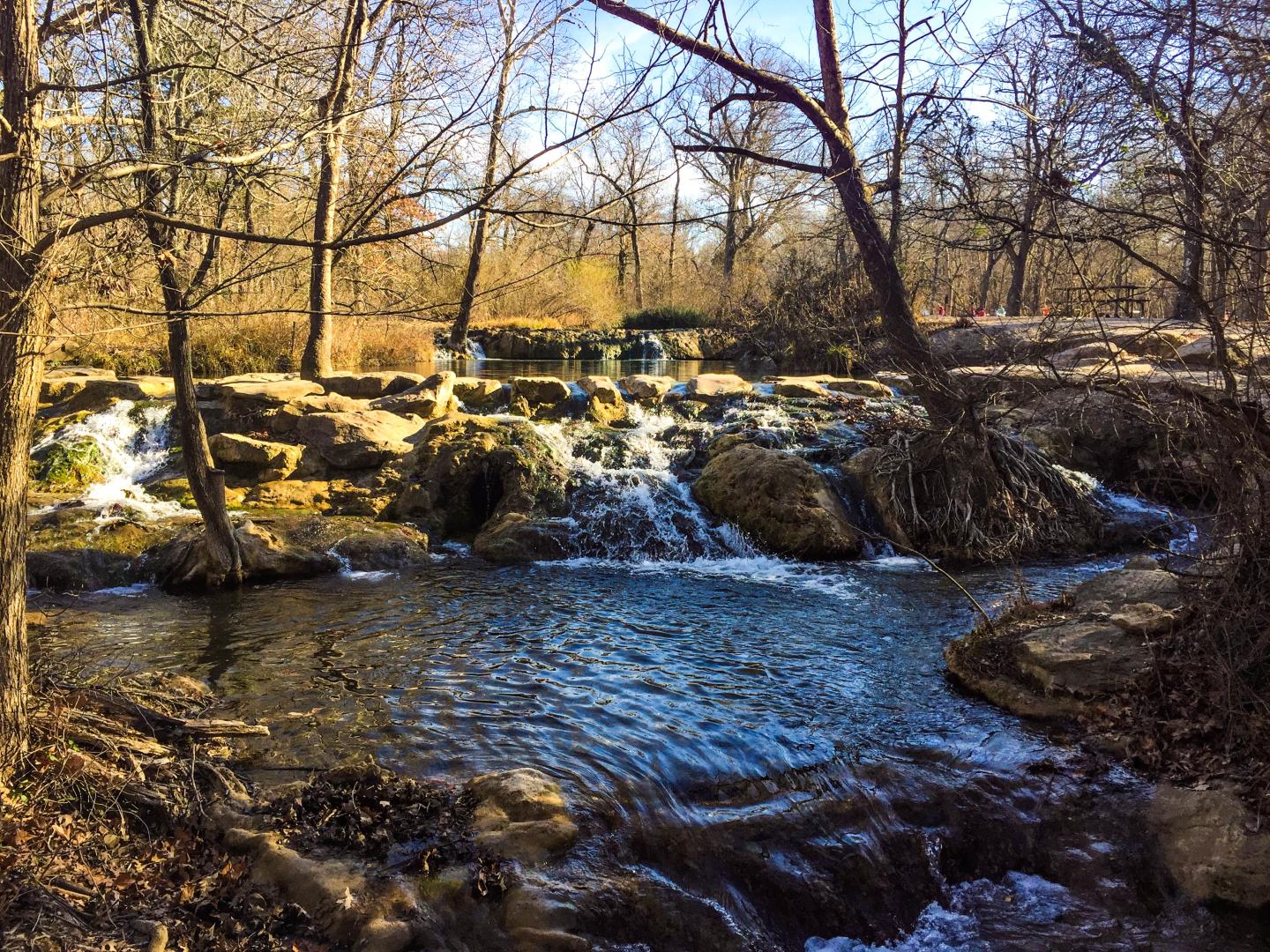
Chickasaw National Recreation Area
If you are near an Oklahoma access point to the trail, visit Chickasaw National Recreation Area. This park is full of trails, campsites, and waterways. It's also an important cultural center and enhances any visit to Trail of Tears National Historic Site.
Visit Smart
Plan Ahead
Since the locations along the trail are owned and operated by a variety of private and public landowners, always check hours and visitor information before visiting a site.
Check the Weather
Weather varies greatly along the length of the trail. Look up weather conditions before you visit an area, always bringing extra layers.
Come Prepared
If hiking on trails, bring steady shoes. Always pack plenty of water and snacks.
Leave No Trace
Respect the significance of the natural and cultural sites by taking only photographs and following Leave No Trace principles.



